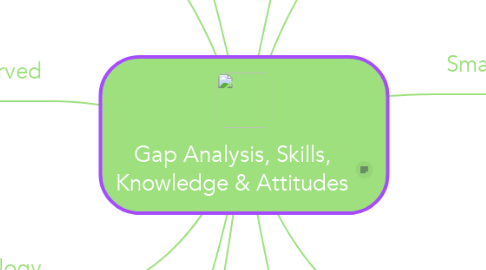Gap Analysis, Skills, Knowledge & Attitudes
by Alyssa Manuel


1. Assessment of feeding
2. Watson Caring Science Institute
2.1. Loving, Compassion
2.2. Kindness
2.3. Looking at the whole patient, mind, body, and spirit
2.4. Genuine Teaching & Learning
3. Unitary- Caring Science Model of Care
3.1. Knowing an individual as a whole person
3.2. Wisdom, Love, Compassion
3.3. Caring consciousness
4. Science of Learning
4.1. Growth Mindset
4.1.1. Dedication
4.1.2. Increased Effort
4.2. Neuroplasticity
4.2.1. Lack of Sleep
4.2.2. Stress
4.2.3. Difficulties with Memory
5. Smart Goal #1
5.1. Identification, prevention, management, and treatment of postpartum hemorrhage in the postpartum unit will be completed by March 30, 2018. Measures of success will include: 1) an illustration for instruction with families created at a health literacy in simpler terms, using my own words in a way that they can understand; 2) completion of the chapters in the Postpartum Certification Review exam pertaining to postpartum hemorrhage with a pass of the end of chapter exams at 85% pass rate; 3) validation of my learning will be validated by an Obstetrician in the Mother/Baby unit.
6. Smart Goal #2
6.1. Identification, prevention, management, and treatment of pathologic jaundice in the newborn population will be completed by July 30, 2018. Measures of success will include: 1) an illustration for instruction with families created at a health literacy in simpler terms, using my own words in a way that they can understand; 2) completion of the chapters in the Neonatal Certification Review exam pertaining to pathologic jaundice with a pass of the end of chapter exams at 85% pass rate; 3) validation of my learning will be validated by the Pediatrician in the Mother/Baby unit.
7. Population Served
7.1. Economic Disparities
7.1.1. 43% of Latinos without high school diploma
7.1.2. 25% Native Americans without high school diploma
7.2. Epidemiological Issues (CHNA, 2016)
7.2.1. Limited access to health care
7.2.2. Low income
7.2.3. Economic security
8. Pathophysiology
8.1. Postpartum Hemorrhage
8.1.1. Chapter 21 (Heather & McCance)
8.1.2. Causes and Prevention Management Article
8.2. Pathologic Jaundice
8.2.1. Chapter 37 (Heather & McCance
8.2.2. Hyperbilirubinemia Article
9. Pharmacology (Lehne Chapter 21)
9.1. Postpartum Hemorrhage Administration
9.1.1. Methergine
9.1.2. Cytotec
9.1.3. Pitocin
10. Health Assessment
10.1. Identifying pathologic jaundice through assessment
10.1.1. Interpreting Lab Results
10.1.2. Assessment of output
10.2. Identifying postpartum hemorrhage through assessment
10.2.1. Assessment of bleeding
10.2.2. Assessment of fundus
10.2.3. Assessment of clots
11. Pathologic Jaundice Treatment
11.1. Phototherapy
11.1.1. Baby's undressed
11.1.2. Baby's eyes are covered
11.1.3. Bilirubin level is measured

